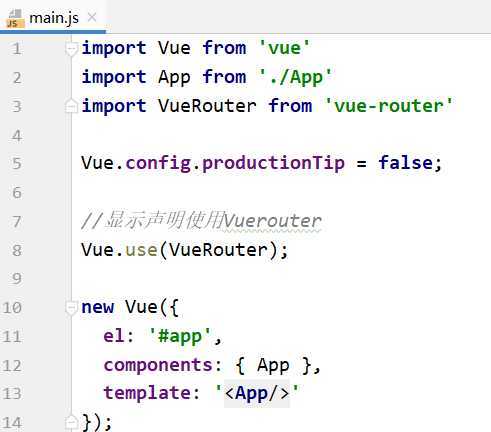先创建一个vue-cli项目,在该项目下完成以下操作。
vue-router是一个插件包,所以我们还是需要用npm/cnpm来进行安装。
在IDEA下的命令行输入:
npm install vue-router --sace-dev
(如果出现错误,按照提示解决即可)
下载成功后会在node_moudles包里出现vue-router文件。
然后在main.js里导入vue-router
import VueRouter from ‘vue-router‘
并显示声明使用Vuerouter
Vue.use(VueRouter);

先删除没有用的东西
components 目录下存放我们自己编写的组件
定义一个Content.vue 的组件
<template>
<div>
<h1>内容页</h1>
</div>
</template>
<script>
export default {
name: "Content"
}
</script>
<style scoped>
</style>
安装路由,在src目录下,新建一个router文件夹,专门存放路由。在里面创建index.js
import Vue from "vue"
//导入路由插件
import Router from ‘vue-router‘
//导入上面定义的组件
import Content from ‘../components/Content‘
//安装路由
Vue.use(Router);
//配置路由
export default new Router({
routes:[
{
//路由路径
path:‘/content‘,
//路由名称
name:‘Content‘, //可省略
//跳转到组件
component:Content
}
]
})
在 main.js 中配置路由
import Vue from ‘vue‘
import App from ‘./App‘
//自动扫描里面的路由配置
import router from ‘./router‘
Vue.config.productionTip = false;
new Vue({
el: ‘#app‘,
//配置路由
router:router,
components: { App },
template: ‘<App/>‘
});
在 App.vue 中使用路由
<template>
<div id="app">
<router-link to="/content">首页</router-link>
<router-view></router-view>
</div>
</template>
<script>
export default {
name: ‘App‘,
}
</script>
<style>
#app {
font-family: ‘Avenir‘, Helvetica, Arial, sans-serif;
-webkit-font-smoothing: antialiased;
-moz-osx-font-smoothing: grayscale;
text-align: center;
color: #2c3e50;
margin-top: 60px;
}
</style>
router-link:默认会被渲染成一个a标签,to属性为指定链接
router-view:用于渲染路由匹配到的组件
最终效果如下:
点击链接会出现下方文字

原文:https://www.cnblogs.com/hellowen/p/12919349.html